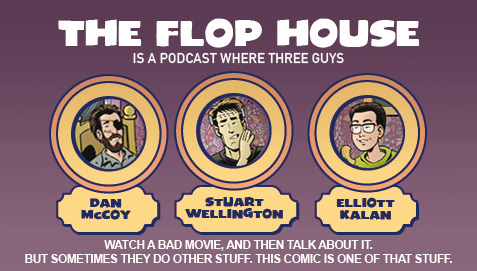As the foremost authority on werewolf movies ’round these parts, it naturally fell to me to review Bryan Senn’s The Werewolf Filmography, the first attempt at a comprehensive overview of the subject since Stephen Jones published The Illustrated Werewolf Movie Guide back in 1996. (Senn dismisses Jones’s book in his introduction, claiming “its brevity and haphazardness makes it far from definitive and of limited use,” but it’s still worth tracking down and hanging onto for its generous sampling of photos, posters, and lobby cards, many of them in color.) Where Jones muddies the waters by including any and all films in which someone is transformed into an animal — resulting in annoyances like every filmed version of Tchaikovsky’s Swan Lake ballet getting a capsule review — Senn’s bent is more lycan-centric. In fact, of the “300+ Movies” trumpeted in the book’s subtitle, only 158 are covered in the main section, with the rest being relegated to the chapters on “Pseudowolves” (a slippery designation that feels arbitrary at times) and “Other Were-Beasts” (a less crowded and more self-explanatory field).
In his introduction, Senn cuts right to the heart of the matter. “Why write a book on werewolf cinema,” he reasonably asks, “if the majority of the films are, shall we say, less than classic?” The answer, of course, is to highlight the good and the great while steering people away from the bad and “the howlingly ugly.” To this end, Senn employs a five-moon rating system (similar to the one used by Jones, albeit without the fancy graphics) that isn’t nearly so bottom-heavy as one might expect based on the genre’s track record. True, it’s possible to count the five-moon movies on one claw (for the record, they are The Wolf Man, The Howling, An American Werewolf in London, Dog Soldiers, and Game of Werewolves), and there are only two that get four-and-a-half (Abbott and Costello Meet Frankenstein and Ginger Snaps), but those are neatly balanced out by the four half-moon movies and the three turkeys that come away with zero. (Happily, I have not seen any of the latter, and based on Senn’s recommendation, will continue to avoid them.) That leaves the majority in the one-to-four-moon range, with a fairly even distribution reflecting the range in quality therein.
To be fair, Senn tosses more than a few curve balls into the works. While he takes Hammer’s The Curse of the Werewolf down a peg with a two-and-a-half-moon review, questioning its “classic” status in the process, he doles out four moons to the likes of Silver Bullet, the 2011 Red Riding Hood, and Wolves, none of which impressed me that much when I saw them. He does, on the other hand, recognize that Rise of the Lycans is the best entry in the Underworld series, and is unafraid to call out dreck like Night Shadow, The Rats Are Coming! The Werewolves Are Here!, Red: Werewolf Hunter, and Teen Wolf Too. That last write-up contains one of several typos that managed to sneak past Senn’s editor, though, when star Jason Bateman is accidentally called “Justin.” (See also: the “Pseudowolf” entry on The Brothers Grimm, which misspells Peter Stormare’s name twice before getting it right in the very next paragraph.) Most damning of all, though, is the way the back cover lists the wrong year (2011) for Dog Soldiers, an error compounded by its inclusion in McFarland’s online listing for the book.
Other idiosyncracies abound. While it’s understandable that Senn would want to partition off films where werewolves only appear in supporting roles or, say, a single segment of an omnibus film, relegating Paul Naschy’s The Beast and the Magic Sword and Licántropo and other Spanish-language werewolf films to the “Pseudowolves” chapter merely because they never received an official release in the U.S. seems short-sighted, especially since Senn’s write-ups for them are often as long and detailed as his “full-fledged” werewolf film reviews. He’s also heavily reliant on quotes from the filmmakers — many of them culled from other sources, although some hail from interviews Senn personally conducted — and given to repeating himself to pad the entries out. And while it’s nice to have an appendix listing the films in chronological order (since the text arranges them alphabetically), it would have been nice to have another one that breaks them down by rating for easy reference.
With its hefty $55 price tag and sturdy hardback binding, The Werewolf Filmography is an impressive, if imperfect, addition to McFarland’s stable of horror reference books, and can be ordered directly from the publisher (www.mcfarlandpub.com, 800-253-2187) [or Amazon – ed.]. It won’t take long for it to go out of date, though, since, as Senn points out in his introduction, more than half of the werewolf films he covers have been produced since the turn of the millennium, with more being churned out all the time. Some of them may turn out to be winners (I’ve got high hopes for Another WolfCop, to give one example), but lycan-lovers will always need help separating the wheat from the chaff. With luck, a second edition where Senn does just that won’t be long in coming.

















